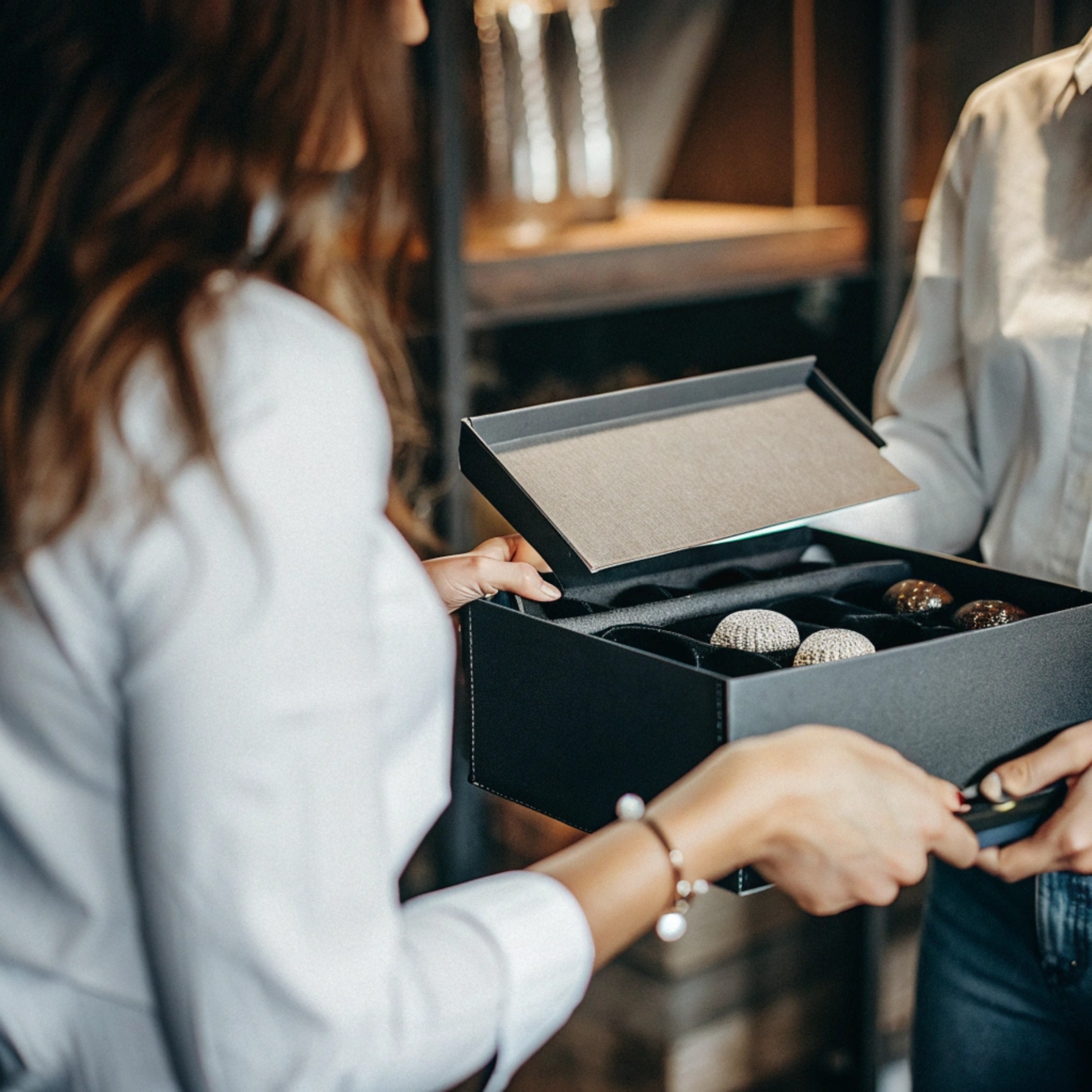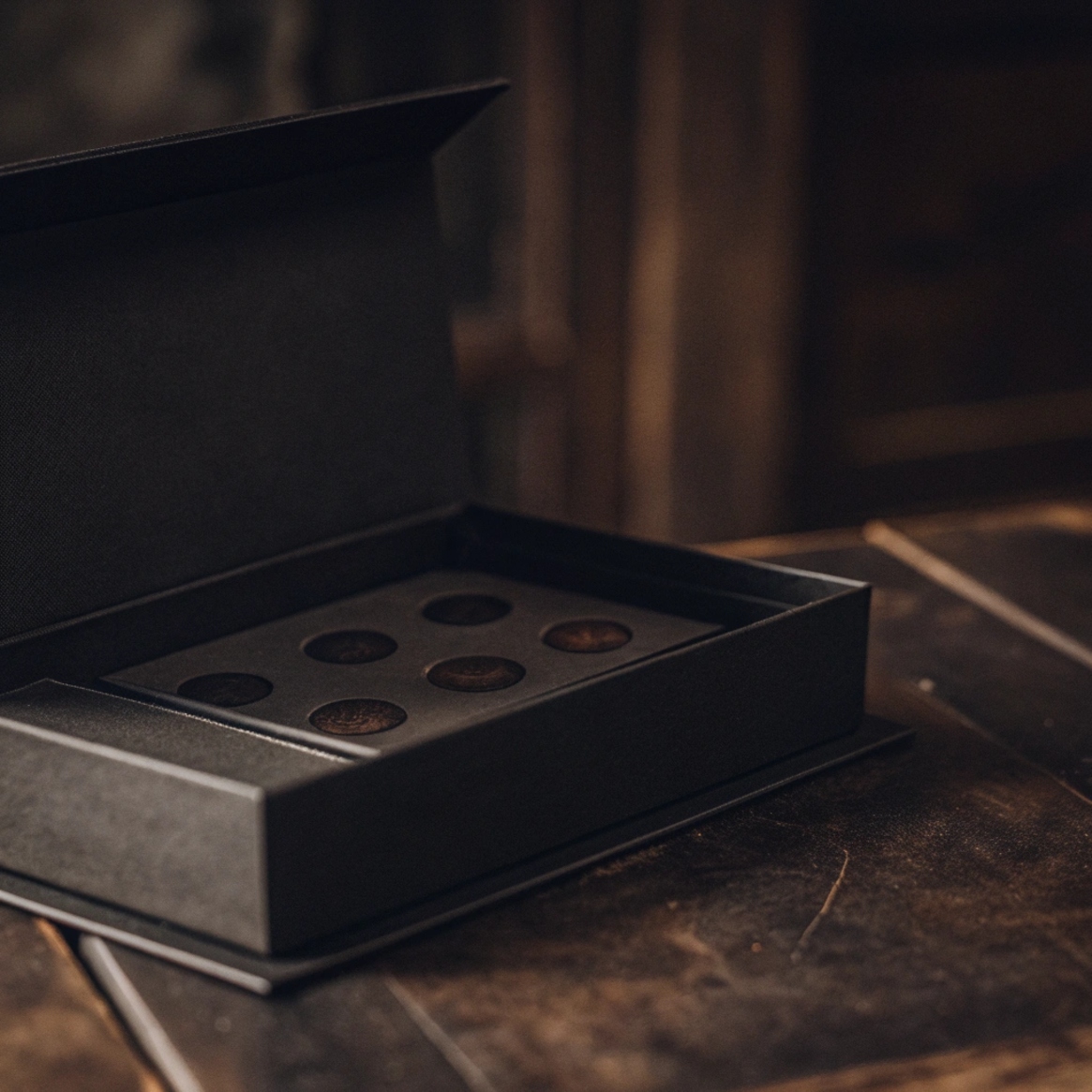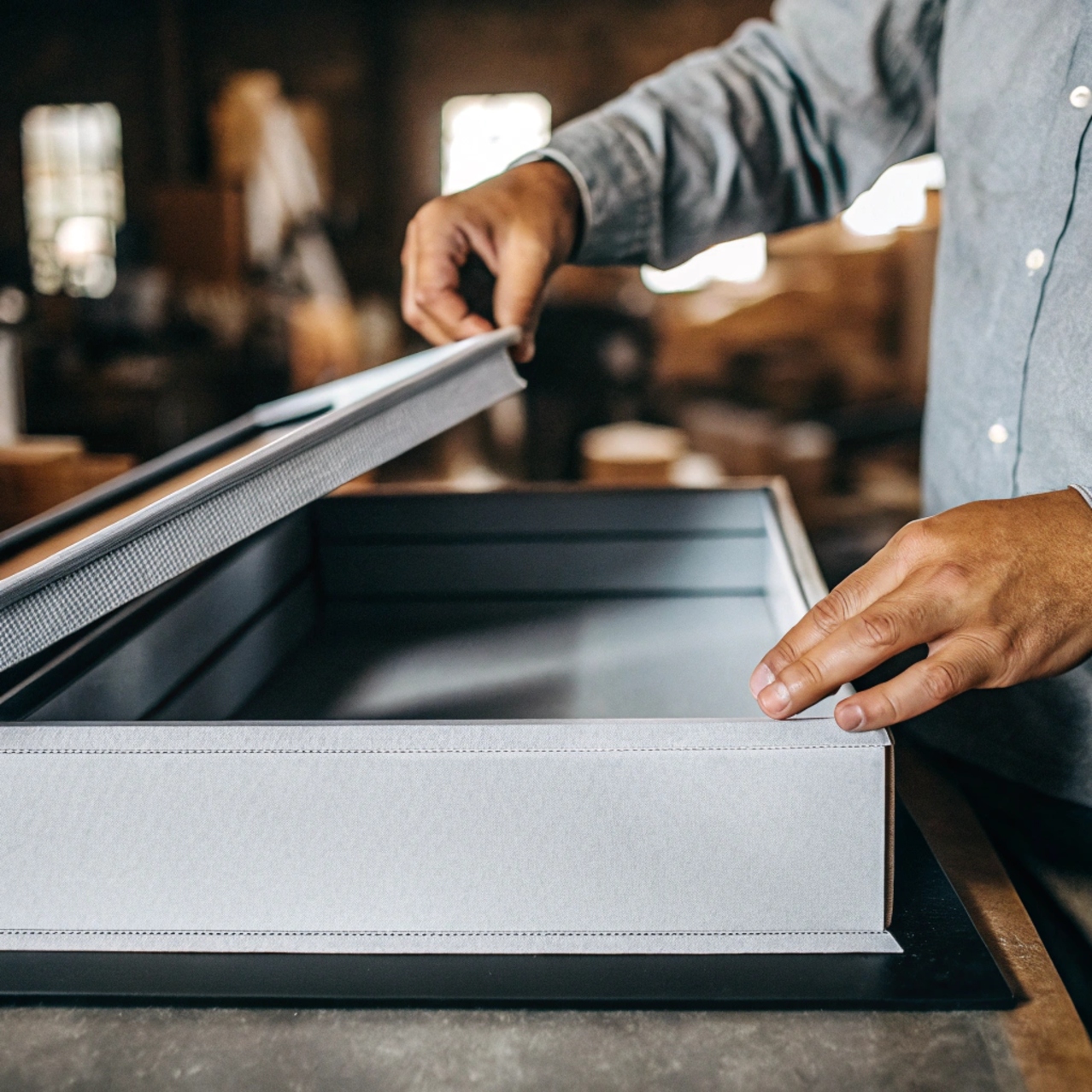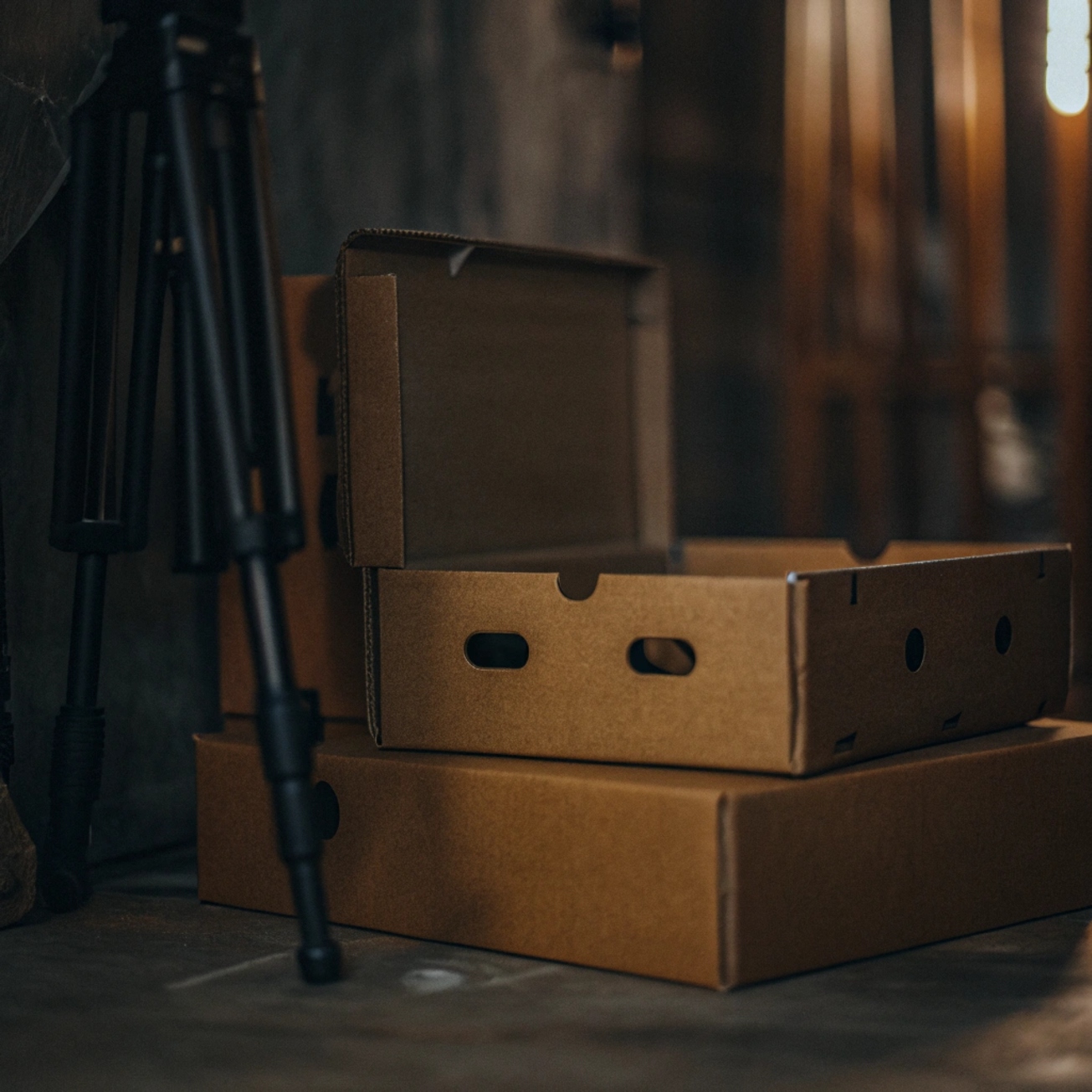
What are telescoping rigid boxes for packaging?
September 16, 2025 • by Winners Packing
You want premium packaging, but standard boxes feel either too bulky or too flimsy. You’re forced to choose between a great unboxing experience and efficient shipping, hurting your budget or brand.
A telescoping rigid box, or a “lid-and-tray” box, is a two-piece container where a larger lid slides over a slightly smaller base. It offers the premium feel of a rigid box while its design allows for creative unboxing experiences and, in some cases, adjustable sizing.

At first glance, a telescoping box looks simple. It’s just a lid and a base. But the magic is in how they interact. I often explain it to my clients as a combination of a Russian nesting doll and a high-speed train carriage. The two parts are engineered to slide together with a perfectly controlled tolerance. Our engineers call it a “breathing structure.” A tiny, 0.3mm gap allows the box to “breathe” with changes in temperature and humidity, ensuring it never gets stuck. It’s this hidden precision that transforms a simple container into a stage for your product.
What is a telescoping rigid box?
You see “lid and tray” boxes everywhere, but you might think they’re all the same. This overlooks the incredible engineering that separates a basic box from a luxury experience.
A telescoping rigid box has a top lid that slides smoothly over a bottom base. Unlike a simple box, its quality is defined by the precise gap between these two parts, which controls the friction and creates a satisfying, controlled reveal for the customer.

A Swiss watchmaker once told me, “Precision is not a number; it is a philosophy.” This idea is perfectly captured in the design of a high-quality telescoping box. The difference between a frustrating, stuck lid and a seamless, elegant opening comes down to fractions of a millimeter. Every detail is a calculated decision to create a specific feeling for the person opening the box. It’s a quiet testament to a brand’s commitment to quality before the customer even sees the product. This dedication to the small details is what creates a premium feel.
The Engineering Behind the Smooth Slide
We obsess over these details because they make all the difference. Here’s what goes into our “breathing structure”:
| Feature | The Detail | The Benefit |
|---|---|---|
| The Golden Gap | A 0.25mm space between the lid and base—thinner than a human hair. | Creates a smooth slide with just enough tension, feeling secure yet easy to open. |
| Angle Magic | A subtle 2° angle on the opening edge of the base. | Reduces the force needed to open the box by 40%, guiding the lid off effortlessly. |
| Material Balance | We use greyboard with a specific density of 1.2g/cm³. | This ensures the box is rigid and strong but not so heavy that it hinders the sliding motion. |
| Climate Prediction | We account for the expansion rates of materials in different climates. | A box sent to Dubai has a slightly different tolerance than one sent to Norway to prevent sticking. |
How can you use telescopic boxes?
You think a box is just for shipping or holding a product. You’re missing out on how innovative packaging can solve business problems, from logistics to customer loyalty.
Use telescopic boxes to create multi-stage experiences. A box can be compressed for shipping, partially extended for retail display, and fully opened for gifting. This adaptability makes it a versatile tool for both logistics and marketing, serving multiple functions throughout its lifecycle.

My first mentor in this business taught me, “A successful package is one that can survive and thrive in at least three different scenarios.” A telescopic box is the perfect example of this philosophy. We designed one for a whiskey brand that truly lived this idea. In its compressed state, it saved 38% in shipping space. On the shelf, it was extended to a medium height that perfectly framed the bottle’s label. At home, it opened fully to reveal a set of glasses alongside the bottle. This chameleon-like ability turns the packaging from a cost into an asset.
A Revolution in Scenarios
- For High-Value Goods: For a high-end porcelain brand, we designed a “three-stage suspension” box. It was compact for secure transport, raised to a “display mode” for retail counters, and fully opened for a grand gifting presentation.
- For Collectibles: We created a “growth package” for a blind box toy brand. The initial box held a single figure. As a customer’s collection grew, the box could be extended to accommodate more, eventually transforming into its own display case. This “companion design” helped increase their customer repurchase rate by 27%.
- For Sustainability: The adaptability extends the box’s life. One phone brand used the same core telescopic box design for three generations of phones, simply adjusting the inner tray. This reduces waste and design costs. For another client, the compressed shipping state cut their carbon emissions by 21%.
What is the difference between a rigid box and a folding box?
You’re stuck choosing between a premium rigid box or a cost-effective folding carton. You feel forced to compromise on either brand image or your budget and shipping costs.
A rigid box is pre-formed, durable, and feels luxurious, making it ideal for high-value products. A folding carton ships flat and is assembled later, saving on shipping but offering less protection and a less premium feel. The telescoping box blends these benefits.

“Should I choose a rigid box or a folding box?” This is one of the most common questions I get. For years, the choice seemed black and white, and I used a simple decision model to help my clients. If your product was valuable, sensitive, and a luxury item, you needed a rigid box. If it was a mass-market, fast-moving consumer good, a folding box was the logical choice. But this is no longer a simple ‘either/or’ decision. The lines are blurring, and innovative structures are giving brands new options.
My 10-Year Decision Matrix
Here is the traditional way to look at it:
| Factor | Choose a Rigid Box If… | Choose a Folding Box If… |
|---|---|---|
| Perceived Value | High perceived value is critical, even for an affordable item. | Functionality and cost are the main drivers. |
| Protection Need | Item is fragile or high-sensitivity. | Item only needs general protection. |
| Brand Position | Positioned as a premium, boutique, or gift item. | Positioned as a mass-market or value item. |
| Inventory Cycle | Will be stored for over six months. | Will be sold in under three months. |
| User Experience | Goal is a memorable, ceremonial unboxing. | Goal is simple, convenient access. |
However, an innovative telescopic box breaks this binary choice. It delivers the luxurious weight and texture of a rigid box. At the same time, certain designs can be shipped in a compressed state, offering the spatial efficiency closer to that of a folding carton. It gives you the structural integrity of a rigid box with added functionality and a unique adaptive quality.
Conclusion
The best packaging isn’t a restrictive cage for your product. It’s a stage that creates possibilities, giving every product the perfect place to be presented with dignity and flexibility.
“`
